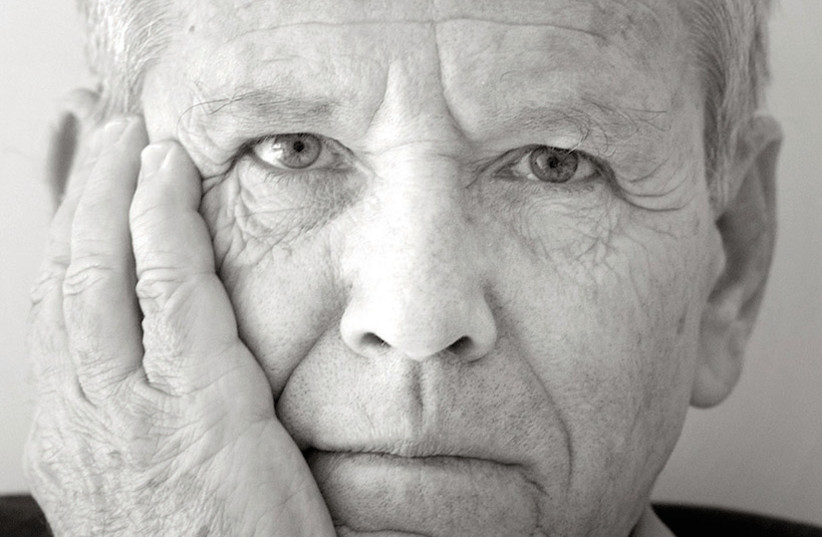In 2014, Amos Oz spoke regularly with Shira Hadad, the editor of his final novel, Judas, and as their conversations continued beyond the scope of the novel, they recorded their talks and later turned the transcripts into a book, What Makes an Apple?, published in Hebrew in 2018 and now translated into English by Jessica Cohen.
Cohen also translated Oz’s last work of nonfiction, Dear Zealots, which presents his views on political fanaticism, specifically in the Israel-Palestine context, and in order to avoid overlap, Hadad and Oz decided to not include their conversations on such subjects in What Makes an Apple?
In her Preface, Hadad also notes that their “more essayist portions” of their talks will soon be published in a separate book. That leaves What Makes an Apple? rather slight, at only 138 pages, and though I would rather have had a larger book with all of their conversations published together, I understand their intent of doing otherwise, because what’s left is an intimate portrait of Oz near the end of his life.
The six sections
The six sections cover the topics of writing (the title refers to a metaphor about the components of a story), gender relations, his career, engaging with criticism, teaching, and his legacy. The talks are personal but not private, revealing but not revelatory. While much covers known territory found in his most popular books, some bits offer glimpses into the construction process of how he made those books.
For instance, I was startled to learn that a 25-year-old Oz composed his most famous novel, My Michael, in an airplane-sized bathroom, writing on a notepad while smoking cigarettes late into the night, after a long day’s work on the kibbutz. Later in life – once Oz left the kibbutz and became a full-time writer – he always woke up at 4 a.m., showered and shaved, took a walk, and was back home at his writing desk by five, ready to put in several hours of work.

This was his only writing ritual, other than always having everything in its place – he’s a stereotypical Taurus (bullishly determined), with Virgo characteristics (neurotically fastidious). He rewrote scenes many times, not revising but writing one and putting it away, writing another and putting it away, until he had perhaps 10 versions of the same scene, and then he would compose the final version by combining the best parts from the drafts.
He says that the one chapter in Judas that gave him the most trouble was the rewriting of Jesus’s crucifixion; originally it was about 80 pages, and he knew it’d “sink the book.” So he rewrote it, and it was over 100 pages. He kept rewriting it until he got it to 10 pages, the version that’s in the novel. Such devotion to craftsmanship is as inspiring as it is intimidating.
As a conversation partner, Hadad is not passive, merely eliciting opinions from the old wise man. Rather, she pushes back, challenges him, corrects him, makes him confront himself. Never aggressively, of course, always respectfully. But she doesn’t let him off the hook for half-baked thoughts, or evasions. These tensions arise mostly when discussing contemporary, post “Me Too”-feminism. For instance, though Oz is a feminist, he’s against “militant feminism,” particularly that of radicals like Andrea Dworkin, who claims every penetration is rape.
Oz thinks such ideas “increase feelings of shame and guilt,” as well as “increase hypocrisy and anxiety.” Plus, he says, “Life is full of pain, and it always ends very badly. So why object to having three or four things that make our life better?” More controversially, he doesn’t think that having pictures of half-naked women in an office constitutes “an environment of sexual harassment.” In other words, he thinks things have gone too far.
“Life is full of pain, and it always ends very badly. So why object to having three or four things that make our life better?”
Amos Oz
Hadad points out that such ideas are a result of thousands of years of oppression and inequality and that “perhaps a few years of anger are called for.” But that’s just where Oz disagrees, because he’s against fanaticism of all kinds. “I have a nose for fanaticism, and wherever I smell it, I get worried,” he says.
To me, these conversations, along with his views in Dear Zealot, show Oz to be a classic liberal. That is, he’s for universal human equality, his ideas are based on reason, and he’s open to compromise. And this pits him against the emotionally-charged intolerant identity politics of contemporary progressivism – a conflict that Francis Fukuyama explores in his recent book, Liberalism and its Discontents.
That separation of what Fukuyama reductively calls Postmodernism and Liberalism is perhaps why many young people today consider Oz irrelevant – they want inclusion, anti-racism, and unambiguous condemnation, not the fairness, equality, and nuance Oz proposes. And at the end of his life, Oz seems fine with his irrelevance. He’s open to learning, but he’s an artist and liberal at heart, and if times have changed then he hasn’t – other than becoming more forgiving and less judgmental, more humorous and less preachy. In other words, he’s become wise.
After 1968’s My Michael made him a voice of a generation, and the most famous Israeli writer, there was a time in the ’80s and ’90s when his work was panned, even mocked. But after his 2002 memoir A Tale of Love and Darkness, his reputation experienced a renaissance, and his last books are among his best; the story collection Between Friends, the political essays in Dear Zealot, and his final novel, Judas. If you’re already an Oz fan, then you’ll appreciate What Makes an Apple? But if you’re not, then I’d instead start with these books. After all, without them, there wouldn’t be this one. ■
What Makes an Apple?
By Amos Oz, with Shira Hadad, translated by Jessica Cohen
Princeton University Press
152 pages; $19.95
